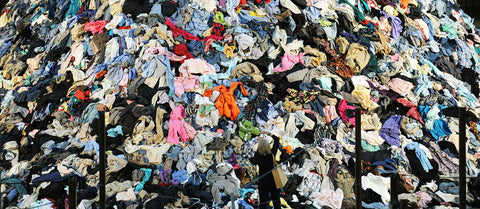Why Sustainable Approaches are the Future of Streetwear

Streetwear started in California in the 1980s and has grown over the years; it has now taken parts of Japanese street fashion, hip-hop fashion and some other fashion elements in the world. Streetwear normally included casual wear like t-shirts, baseball caps, jeans, and sneakers. Influential streetwear brands included Hobie, Offshore, Gotcha, Gucci, Fendi, Burberry, and some other top brands. Some of the streetwear brands that started the game got their inspiration from the New wave, heavy metal, the DIY aesthetic of punk and hip-hop culture. As far back as the early 1980s, some streetwear brands like Adidas and Kangol attached themselves to hip-hop, from all of these you can see that streetwear and hip-hop have been mixed together from the very beginning. Streetwear, as said earlier on, mixes different elements in one look while aiming to be casual and comfortable. Unlike when streetwear started, contemporary streetwear is being influenced more by sporty and nice athletic fashion more than hip-hop fashion which gave birth to streetwear due to the decline of formal wear in the early 1980s. Luxury brands like Gucci, Fendi, Alexander Wang and some other top brands are now making luxury streetwear, which has attracted a wider audience.
Nowadays the amount of streetwear and other wears that are produced far exceeds the need for such clothing. This has resulted in a lot of waste filling the oceans and land. Due to the increasing rise of such production, the fashion industry whose main catalyst is streetwear is the second largest industry polluting the earth as a whole. Due to all of these messes, the idea of "sustainable fashion" and streetwear has arisen. The question now is what is sustainable fashion? Sustainable fashion started in the 1940s about the same time World war 2 was going on. The ideal came about due to the rationing of resources, so the fabric used in making clothes was reduced; the aim was to reduce the waste of leftover fabrics. Sustainable fashion became widely known in the late 1980s when companies like Patagonia and ESPRIT brought the ideal of sustainability into the fashion industry. The owner of such companies at that time knew the effect of overproduction on the environment, so they started conducting research on fibers and brought the idea of sustainable fashion into the industry. The idea of sustainable fashion has been explored by a lot of fashion brands over the years, though the ideal which brought sustainable fashion to the game was improving the standard of products through fiber and fabric processing; the main cause of unsustainability is high consumption growth. Sustainable fashion tackles the issues of wasting clothes because it solves the issues of environmental and occupational dangers.
The idea of sustainable fashion has brought awareness to the streetwear industry; eco-friendly streetwear brands such as Superego are now being produced. This has brought about the awareness that making high volume streetwear with a low-cost rate using harmful manufacturing processes is harmful to the environment. The idea behind this is to increase profits, but in the process, harmful materials such as insecticides, pesticides and even fossils fuel are used in the making of clothes. The term associated with such practices is known as ‘'fast fashion'', the idea of fast fashion is quite the opposite of sustainable fashion. Slowly but surely streetwear brands are now distancing themselves from such practices. A lot of streetwear brands have seen the negative effects fast fashion has on the eco-system and they have turned their back on such way of production.
THE REASONS WHY SUSTAINABLE FASHION IS THE FUTURE OF STREETWEAR.
- IT HAS BETTER MONETARY VALUE.
The idea of fast fashion is just a ploy by brands to increase their profits, but the consumers suffer a great deal because such clothes do not last long when compared with ones made from good and sustainable materials. Non–sustainable streetwear materials are made from chemicals that can affect the durability of such clothes, but streetwear made from original materials last longer. So why buy a lot of non-sustainable streetwear clothes that won’t last long and end up polluting the environment, rather than buying a few sustainable ones which will last longer and have you feeling better about wearing them because it has no negative effect of the environment.
- IT HELPS PROTECT THE PLANET.
By buying sustainable streetwear clothes, you will be protecting the planet, this might not have been a big deal to people in the late 90s, but now, a lot of people are aware of the effect of buying non-sustainable streetwear clothes. So manufacturers are now turning to use sustainable materials in making streetwear. This is the future of streetwear because nowadays the production non-sustainable streetwear is reducing.
- STREETWEAR BRANDS ARE INVESTING MORE IN SUSTAINABLE CLOTHING
Before the introduction of sustainable streetwear, many manufacturers use polyester and non-organic cotton in making their wares instead of organic cotton because it was cheap and more money could be made. Polyester, which is made from polyethylene terephthalate, a plastic derived from crude oil is very cheap and can be easily mixed with other fibers. This was used earlier by a lot of streetwear brands. But recently a lot of streetwear brands are turning their attention to eco-friendly fabrics; this is because customers are aware of the dangers of such materials and are abandoning it thereby leading to low sales of such brands.
If you are looking to shop sustainable head over to our shop, where you'll find the softest shirts made from hemp and organic cotton. Stay Sustained!


Leave a comment